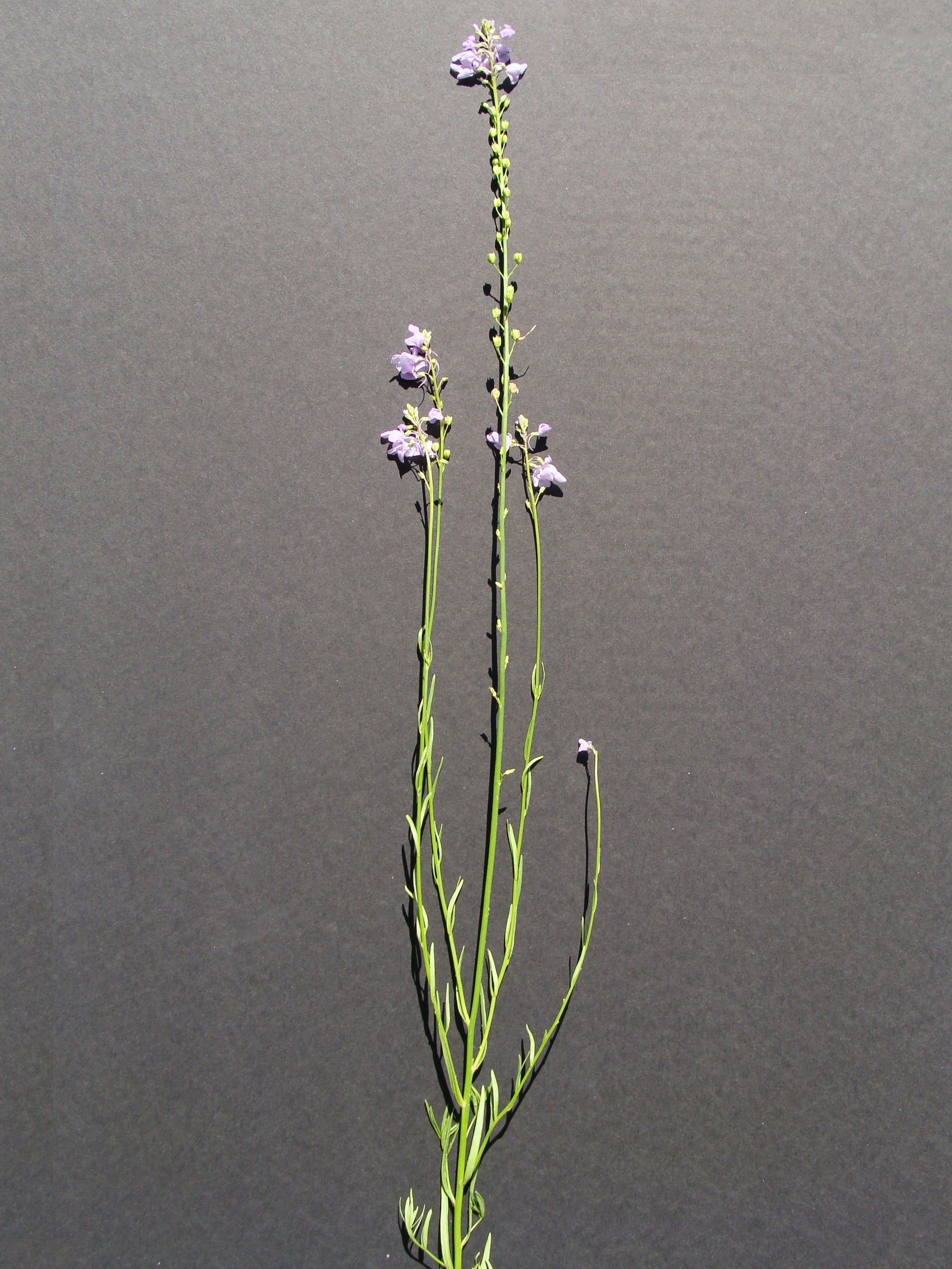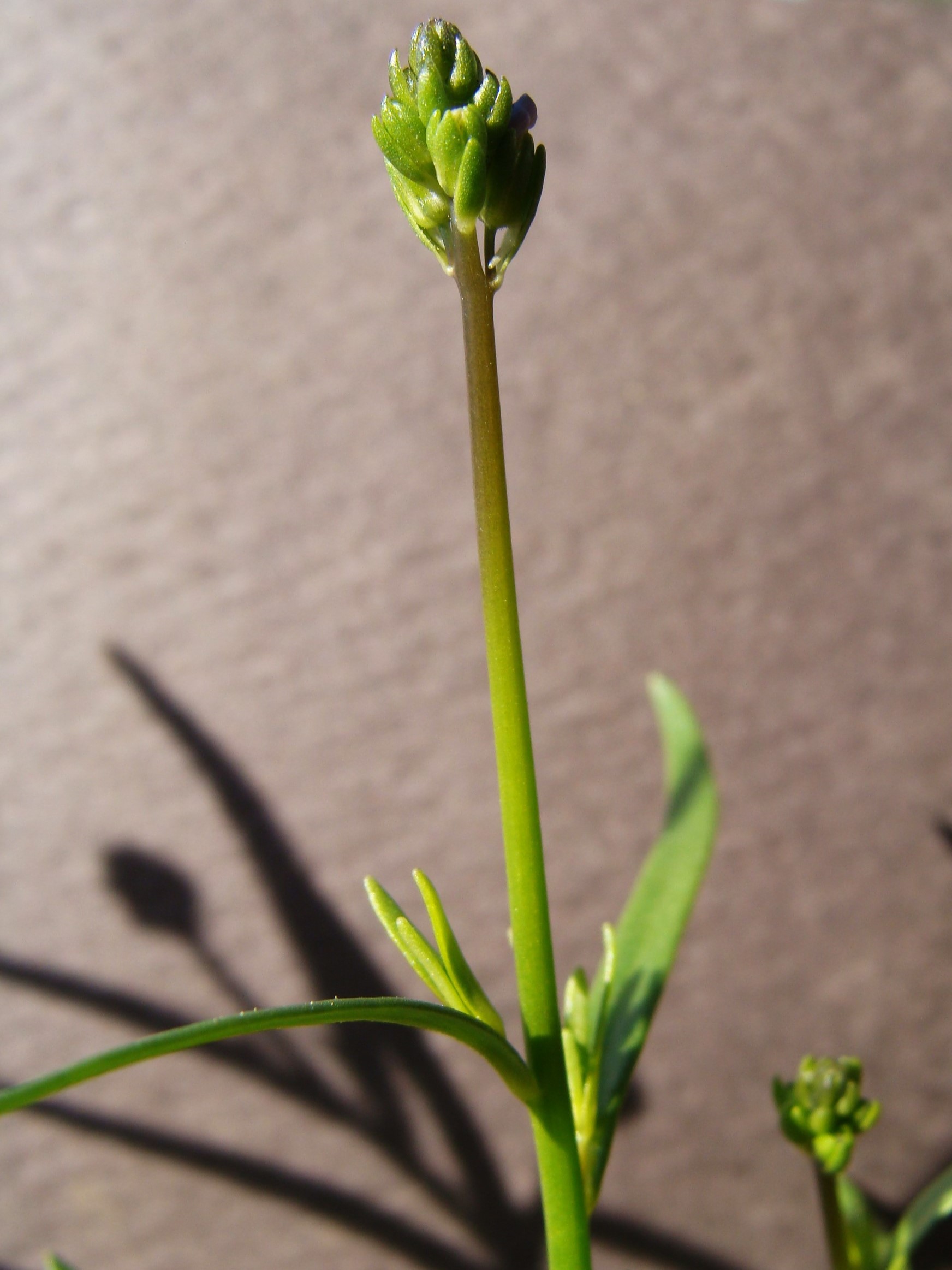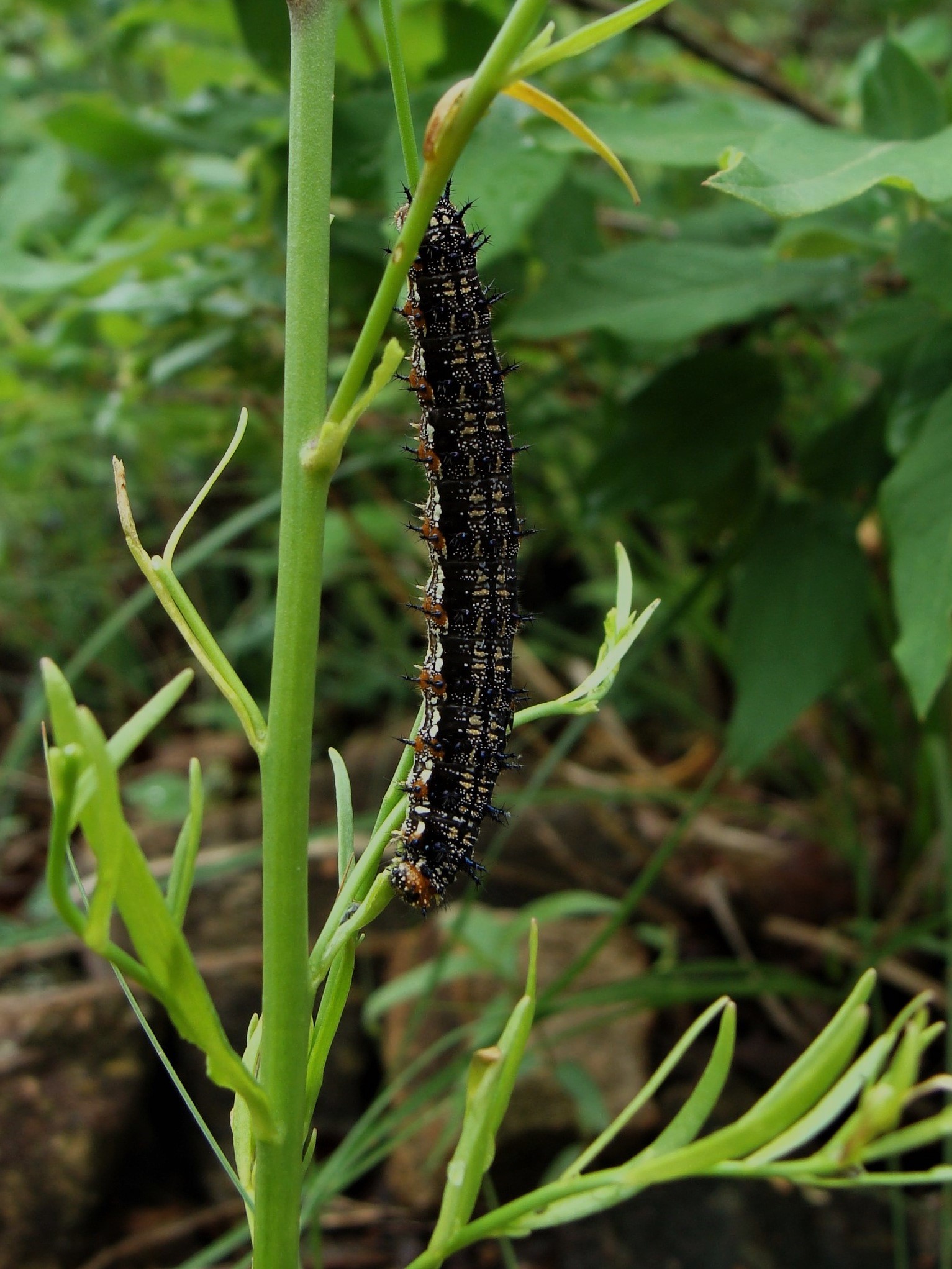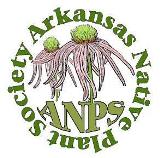Texas Toadflax or Blue Toadflax (Nuttallanthus texanus*) of the Plantain family (Plantaginaceae) is an annual forb with vegetative basal stems and floral stems terminating with a raceme of light blue to lavender flowers. The genus combines the name of British naturalist Thomas Nuttall (1786–1859) with the Greek word for flower. Specific epithet notes that the species was first described as a distinct species based on specimens from Texas. In the US, it occurs from Washington State to southern California and from Arizona to the East Coast along with eastern Colorado and eastern Nebraska. The more concentrated area of occurrence extends from the southernmost tip of Texas to central Kansas, across to the Mississippi River, southward along the River to the Gulf Coast and continuing along the Coast back to Texas. In Arkansas, it occurs statewide. Habitats are widely variable across its total range with habitats in Arkansas including well-drained to upland prairies, upland open woods and disturbed areas with sandy to rocky soils with full sunlight. Plants, from 4 to 20+ inches tall, have white tap roots supported by white fibrous roots.

In midwinter, basal vegetative stems extend radially from the root-crown in mat-like fashion. Growing ascending tips of these prostrate stems, when viewed “head-on”, have rosettes of tightly spaced developing leaves. The leafy stems, from 1-6 inches long at maturity, generally lack axillary buds. The medium green stems with purplish bases (sunny sites) are terete and usually glabrous. Leaves are in whorls of 3 for most of the stem’s length with upper leaves being helically alternate. Leaves of lowermost whorls are ovate to spatulate while upper leaves are linear; decreasing in size distally. Largest linear leaves, about mid-stem, are to ¾ inch long and ⅛ inch wide. As flowering progresses, vegetative stems disappear.


In late winter, one to several floral stems emerge from the root crown. Arrangement of its linear leaves, from stem base to the terminal inflorescence, is mostly alternate with lowermost leaves in askew whorls of 3-4 leaves. Axillary buds of less robust plants may remain dormant so that mature plants may only have a single unbranched floral stem. For robust plants, some to all buds along lower portion of stem develop into short vegetative branches while buds along the upper portion develop into floral branches somewhat smaller than that of the main stem. Length of the ascending axillary branches (vegetative and floral) increases distally with lowermost vegetative ones as short as ⅛ inch and uppermost floral ones to 10+ inches. Leaves that subtend branches, to 1⅜ inches long and ⅛ inch wide, are significantly larger than those of the branch. Leaf spacing increases distally as leaf size decreases. Leaves of floral stems are persistent through the flowering phase. The medium green stems, with stems of robust plants having purplish bases, are terete and glabrous.




The simple, entire (uncut margins) leaves of vegetative and floral stems emerge directly from the epidermis without subtending bracts or stipules. Leaves have near parallel sides, tapered apexes with acute tips and tapered sessile bases. Leaves of both stem types have the same characteristics. They are medium green, thickened and glabrous (without hairs) with a smooth, waxy appearance when young – thinning with age. Veins are not visible except for a slightly depressed upper midrib and a raised lower midvein. Leaves, slightly up-folded along midribs, are oriented along the stem’s rachis. Ratio of the leaves’ length to width remains consistent regardless of leaf size.

Texas toadflax flowers from late March into May. The flowers are in narrow, erect racemes 1-8+ inches long. Racemes, with flowers in a helically alternate pattern, are above an extended (3+ inches) leafless stem segment. The 6-25+ total flowers of a raceme, blooming sequentially in clusters of 2-8, are on short (⅛ inch at flowering) pedicels. Lengthening of the raceme continues throughout the blooming period, especially below the flower cluster, so that blooming flowers remain near the raceme’s apex. Flowers that are erect when in bud, become down-trending with the “heavy” flower and reorient to an upright position as fruit capsules develop with strengthening of the pedicel. Pedicels are subtended by a green, stubby, cupped, pedicel-hugging lanceolate bract to 1/16 inch long and of miniscule width. Individual flowers may remain in bloom for up to 4 days.


The glabrous, green calyx has a very short, cup-like base with 4 relatively long, clasping lobes and a 5th lobe, at top of calyx, that is smaller. Lobes, making-up most of the calyx’s length, are lanceolate with translucent margins. The two lobes at the bottom of calyx do not connect across the calyx’s base. Calyxes more than double in size from the inflorescence to the infructescence stages (to ⅛ inch long and 1/16+ wide) and pedicels lengthen to ¼ inch with a thread-like width. Calyx lobes are very slightly longer than the ovary (developing fruit capsule).


The irregular flowers are two-lipped (bilabiate) with an upper lip 1/4th the size of lower lip. Flowers, made of thin fabric, are about ½ inch wide across the lower lip and 1 inch long, including a ½ inch spur. Lips merge into an odd-shaped tube within the calyx. Lips and a backward spur are pale-blue to lavender with veins of lips sometimes darker (see Photo 11). The nectar-holding spur, extending well beyond the calyx, is smoothly down-turned to straight. Upper lip has 2 squarish, erect to back-flared lobes and a small hood covering the throat and sheltering anthers. Lower lip has a broad, arched, spreading, central platform that divides into 3 broad lobes with broadly rounded margins and a shallow, apical rounded notch. Central lobe is up-flexed across its lower portion. The shorter and wider lateral lobes droop slightly. Arched platform of the lower lip has a depressed zone extending from the throat with bulges to either side. Opening to the throat is closed due to 1) the hooded upper lip, 2) close-contact of lips across throat and 3) near-throat pubescence on the lower lip. Corolla tube, whitish within the calyx, has a protruding “extension” on its upper side where calyx unites with tube. Tube extends past the calyx by passing between the 2 calyx lobes that do not connect across calyx base – spur continuing backwards.


Flowers have 4 stamens (filament + anther) and a pistil (ovary + style + stigma) that are well hidden within the corolla. Stamens, 2 pairs of unequal lengths, are attached at the base of the corolla tube. The pistil consists of a shiny-green ovary, a stubby style and a broadened white stigma. The oblong-ovoid ovary is 2-chambered with 2 locules of the same size. Style is white at its base and lavender towards top. Curving white filaments of the longer stamen pair, attached to the lower side of the lower lip at the tube, where the elongate yellow anthers are positioned face-to-face within the hood of the upper lip and beyond the stigma. Filaments of the shorter stamen pair, attached to the upper side of the tube at the tube, position anthers below the stigma. Pollen is yellow. Spent flowers drop-off cleanly, but the style/stigma persistent on the fruiting capsule.



Mature fruit capsules (ovaries), pedicels and the subtending bracts become light tan as the entire stem also becomes tan. The oblong-ovoid, thin-walled capsules shrink somewhat as they dry. Capsules have smooth, domed, apical covers which are divided into triangular teeth. With fruit maturity, 3-5 teeth per chamber dehisce and spread back against the calyx lobes. Capsules are ⅛ inch long and <⅛ wide. The upright capsules are tightly packed with stacks of seeds in both chambers that are internally separated by a black partition. The sharp-edged black seeds, 250± per capsule, are minutely rough (tuberculate). Style remains persistent as the seeds scatter. Seeds are dispersed by strong wind and rainfall run-off.



Individual Texas Toadflax plants, from a close-up perspective, have interesting flowers and fruits. When seen in large numbers across a prairie-like setting on a windy day, its waves of blue can be enchanting. These large displays are more attractive to insects. It is the host plant to the Buckeye butterfly larva (Junonia coernia) and provides nectar for bumblebees and other long-tongue bees, butterflies and skippers. Texas Toadflax is a great addition to gardens and prairies that have sandy, dry to mesic soils and lots of sun. It is self-seeding.


Another species of the genus with limited occurrence in Arkansas is Sand Blue or Old Field Toadflax (N. canadensis). N. canadensis has the same growth habit, flower shape and flower color. Although seed capsules are about the same size, flowers of N. canadensis are a third the size of N. texanus and seeds of N. canadensis are smooth or only slightly roughened.
- Synonym: Linaria canadensis var. texana
Article and photographs by ANPS member Sid Vogelpohl

